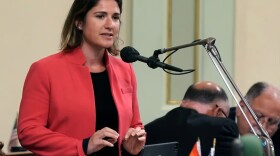In the 1970s, nearly 40 percent of the American poor were aged 65 or over.
In the four decades since, that percentage declined by more than half, a big success story by anyone's measure. Getting older no longer practically guarantees living in poverty.
There are some worrying trends on the horizon, however. The population is aging. Boomers are retiring now, and with Gen Xers next, some economists worry about Social Security's shrinking trust fund. They say if it is not bolstered by 2035, Social Security checks for retired workers could drop from 39 percent of career average to 27.5 percent.
Others, like Chris Farrell of Marketplace Money, think the emphasis on Social Security is misplaced. He is far more concerned with the third of American private-sector workers who have no retirement benefits through their work at all.
In December of this year, President Obama took a small step to address this problem by creating something called a myRA. Workers can save up to $15,000 in a low fee investment plan that would guarantee the principal.
Many economists advocate bigger steps, even a leap of sorts. Chris Farrell is one of these. He says there are simple, good, low-cost instruments that would deal with the looming problem by combining mandated savings with tax credits. Economics professor Teresa Ghilarducci calls these Guaranteed Retirement Accounts.
Why are they not available now? Farrell said the financial sector was afraid of the idea initially — or at least the low-fee part of it. And there is also that word "mandated," anathema to some in Congress.







